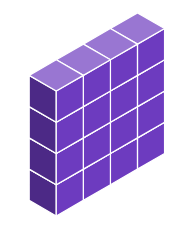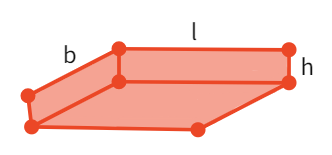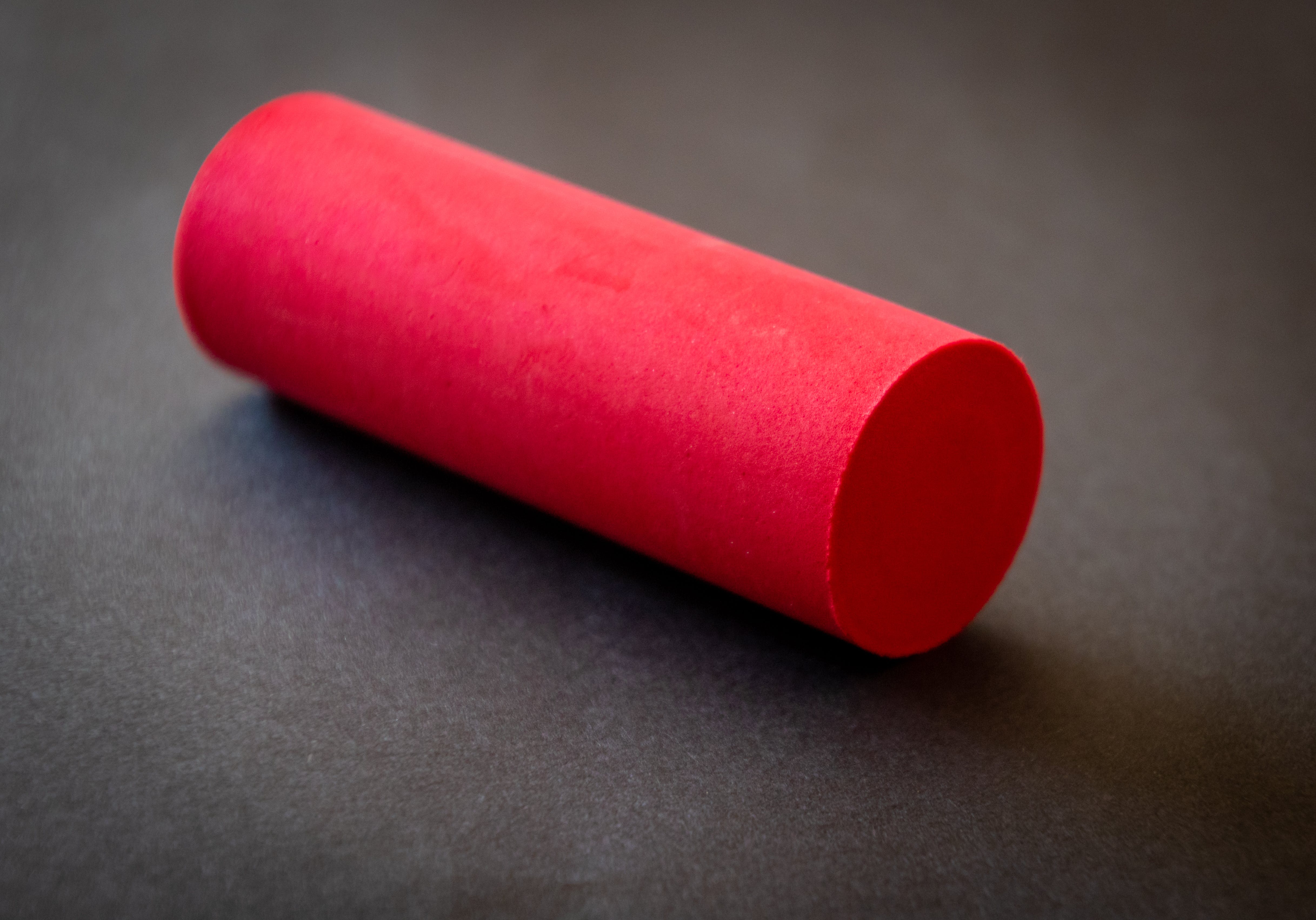Volume of Cube, Cuboid and Cylinder
We have spoken about surface area but another very important related quantity when it comes to solids and shapes is Volume. The amount of space occupied by a three dimensional object is called its volume. For example: The space is a room is greater than the space in a cabinet. In other words, the volume of the room is greater than the volume of the cabinet. Similarly, the volume of a pencil box will be greater than the volume of the pen and the eraser kept inside it.
In terms of real life applications, how many bottles of water can we place in a small store room? What is the amount of milk that can be carried by the milkman if he has two containers with a fixed value of dimensions? Such problems can only be solved when we check for the related volumes.
Now, how to measure the volume of any of these objects?
We use square units-

The volume of a solid can be said to be measured by counting the number of unit cubes it contains. Cubic units which we generally use to measure volume is equal to:
1 cubic cm = 1 cm × 1 cm × 1 cm = 1
1 cubic m = 1 m × 1 m × 1 m = 1
Let's start by finding the volume formula for the basic shapes of cube, cuboid and cylinder.
Cuboid
In the below table, consider the sides and assign them the designation of "length" , "breadth" and "height". Now, take the numerical values and find the product of
| S.No | Cuboid | l×b×h |
|---|---|---|
| (i) |  | |
| (ii) |  | |
| (iii) |  |
We observe that the numerical value of the product
Since,
Volume of cuboid = Area of base × height

Volume of cuboid = area of the base × height = l x b x h
Cube
We have already spoken about how, the cube is a special case of a cuboid where l = b = h. By simply putting this condition into the above equation for volume of cuboid:

- Let l = b = h= a. Thus, volume of cuboid with all sides equal i.e. a cube:
unit 3 - Thus, volume of cube becomes as shown.
Thus,
Volume of cube = a3
where, a is the cube side length.
Cylinder
When it comes to the volume of the cylinder - similar to cuboid, a cylinder has got a top and a base which are congruent and parallel to each other and its lateral surface is perpendicular to the base.

We also know that the volume of a cuboid can be found by finding the product of area of base and its height. Using that same logic to cylinders, we get:
- Volume of a cylinder: (circular base) x (height)
- Thus, if cylinder radius and height are r and h respectively, the volume of a cylinder:
unit 3 - Thus, volume of a cylinder becomes as shown.
Thus,
Volume of cylinder = area of base × height = πr2 x h = πr2h
Let's Solve
Instructions
Equation blanks: Upon clicking on the blank, you will be provided with a variety of algebraic operations. Use these operations to enter the appropriate answer. For example: To enter perimeter of rectangle, 2(l + b), we need to put '2x(l+b)'. Make sure to use the bracket to be clear about the entities that are getting operated on.
The diameter of a cylinder (A) is 7 cm with the height being 14 cm. Diameter of cylinder (B) is 14 cm and height is 7 cm.
(a) Without doing any calculations can you suggest whose volume is greater?
(b) Does the cylinder with the greater volume also have the greater surface area?
- We know that, the volume of a cylinder =
- From this we can see that, the value of
affects the volume of the cylinder more than the . Thus, has a higher volume has it has a - Moving on to verifying if a higher volume also gives a higher surface area.
- Volume of cylinder A =
cm 3 cm 3 - Now, we know that the surface area of a cylinder:
- Therefore, surface area of cylinder A =
cm 2 cm 2 - Thus, a cylinder with higher volume:
a higher surface area.
Find the height of a cuboid whose base area is 180
- We know that the area of the base (from the above formula) is:
- Substituting the given values.
- We see that the height is equal to
cm. - Thus, we have found the required height.
If each edge of a cube is doubled:
(i) By how many times will its surface area increase?
(ii) By how many times will its volume increase?
- We know that the surface area of a cube is:
- The new side is a’ = 2a which gives: Surface area of new cube =
- Thus, the new surface area is
times of the original area. - Moving on to the new volume, we get: Volume of new cube =
- Thus, the new volume is
times of the original volume.
A company sells biscuits. For packing purpose they are using cuboidal boxes:
(1) Box A = 3 cm × 8 cm × 20 cm
(2) Box B = 4 cm × 12 cm × 10 cm.
What size of the box will be economical for the company?
- First, let's calculate the volume of both the boxes.
- Volume(Box A) =
cm 3 cm 3 - We see that both are equal.
- In order to check which box is more economical, we can check the material used for packaging i.e. we need to calculate the
of the boxes. Also - Surface area of a box of length l, breadth b and height h =
- Thus, Surface area for A = Material needed for box A =
cm 2 - Surface area for B = Material needed for box B =
cm 2 - Thus,
is more economical as it will be using lesser amount of material. - Thus, Box B is more economical for the manufacturers.
